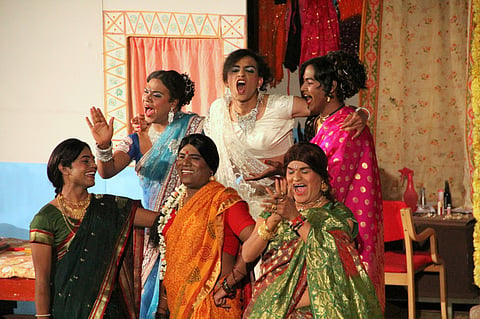

Within minutes of it being put up, the video - in which a person who is referred to as Najma is seen wearing a bra and a pair of salwar is being beaten up by another person, presumably a transgender person – went viral and received several comments lamenting that ‘fake transgenders’ are spoiling it for the rest of the good ones. In the video, the latter goes on to disrobe Najma and expose her genitals to the crowd which has gathered at the scene, saying “See, he is a man.” The ‘real transgender’ person berates Najma, stating that such people give the transgender community a bad name.
Najma, who claims to be from Lucknow, is forced to plead for forgiveness even as she is met with another row of blows. The video “A Real Transgender Publicly Exposing a Fake One” was first published by the The Logical Indian on September 22 and several other websites have also since carried it. Logical Indian has since informed us that on receiving feedback they have decided to pull down the video.
But this video perhaps shows how little all of us, and perhaps some even in the transgender people's community, know about gender identity and being a transgender person.
Who is a transgender person? Is it a person who has the sexual anatomy of both a male and a female? Does having male genitals prove that the person is not transgender?
A screen-grab from the video
The conversation online has been around the impact of ‘fake transgenders’ on the ‘real ones’, discussing how some spoil it for the rest. But the question is this: who or how can one person identify another as a transgender person?
Shedding light on one of the most common misconceptions surrounding the transgender community, Dr L. Ramakrishnan, Country Director of SAATHII, an NGO in Chennai, said that the accusations are wrong at many levels.
“Only the individuals concerned have the right to define themselves as transgender or not. According to the 2014 National Legal Services Authority (NALSA) v. Union of India case, the Supreme Court declared that transgender people have the right to self-identification of their gender as male, female or third gender,” Dr Ramakrishnan told The News Minute. “Basically, if a person who is assigned male or a female at birth feels that he or she is a transgender person, then it does not matter what bodily organs they possess. You cannot decide gender identity by the presence or shape of sexual organs. There are several transgender people who do not opt for sex-reassignment. Further, the NALSA judgement has ruled that hormone therapy and surgery should not be made pre-requisites for legal gender identity change.”
A transgender person is one whose gender identity is different from their assigned gender. For example, if a person is born with male genitals but identifies as a woman, the person is a transgender woman. Many transgender people have a phase of identity development which includes gaining better understanding of their self-image and self-expression.
Dr Ramakrishan further explained that transgender persons are often confused with intersex persons. “An intersex person is born with sexual anatomy or reproductive organs that do not fit the typical definition of male or female, in which case, there might be ambiguous genitals or both male and female reproductive tissues,” he said. “While children born with ambiguous genitals are sometimes given over by their parents to the local hijra community, this is not a reason to assume that all transgender people are necessarily intersex.
The World Health Organization defines transgender persons as having “Gender Dysphoria or gender identity disorder (GID)’ which is a term used by psychologists and physicians to describe people who experience significant unease and dissatisfaction with the sex and gender that they were assigned at birth.
Irrespective of this specific incident and whether Najma is at fault or not, such videos have the potential to create or exacerbate misconceptions about a community which is already plagued by discrimination on so many levels in the society.
A broader issue to address is the acute social and economic marginalisation plaguing the transgender community, that forces some members to construct hierarchies of “who is more authentic” in order to restrict access to the meagre resources available to the community.